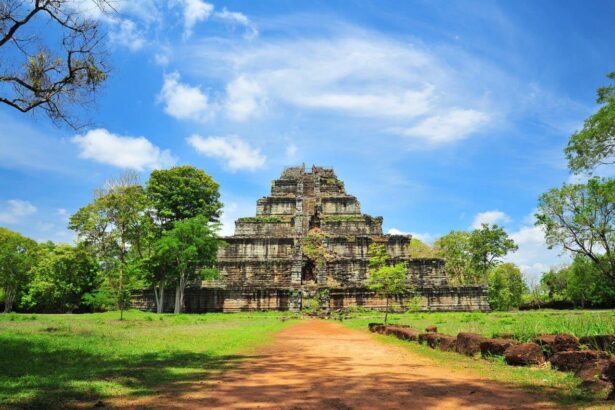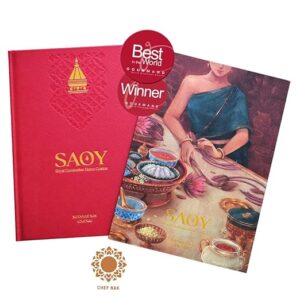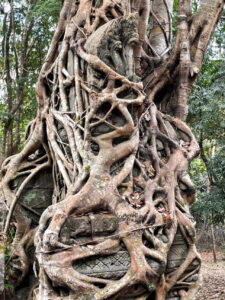
Khnar Sen Keo temple (ប្រាសាទត្រពាំងខ្នារសែនកែវ ឬប្រាសាទខ្នារសែនកែវ) is the sandstone temple, located in Srarlai village, Tbeng Pi commune, Kulen district, Preah Vihear province, about 400 meters from Srarlai village and about 45 kilometers from Preah Vihear town. This Angkorian period temple was constructed in the 11th century in the Baphuon style during the reign of King Udayadityavarman II (1049-1066 A.D.).
The temple has been explored dates back to the late 19th century, by first explorer Mr. Étienne François Aymonier and later Mr. Lunet De Lajonquiere. In 1929, Mr. Henri Parmentier visited the temple for five days, cleaning the sculptures and putting up some of the remain lintels to its origin location, and clearing the pile of dirt off the central tower. Apart from this, there are some other researchers who have studied the sculpture and structure of this temple.
The temple has an interesting design structure and extends along the west-east axis. The temple enters from the east, starting from a cross-shaped sandstone floor with more than 250 meters from the eastern gopura, which in the past may have been a wooden structure and tiled roof. The entrance is 250 meters long from the sandstone floor to the front area of the eastern gopura, with stone pillars on either side and an average distance of 2.5 meters. Today, these pillars have completely fallen in line at the entrance. The temple is surrounded by a rectangular sandstone rampart, measuring 55 meters long and 45 meters wide, more than 2.5 meters high, with 50 centimeters thick, with two gopuras: east and west. The eastern gopura has three entrances and is now in a very dilapidated condition. What is different is that this temple has the false gopuras in the north and south, which it is built closed to prevent access. Inner rampart, there are two sandstone libraries at the east side. Generally, this type of structure is inverted to the central tower, which has now collapsed.
The temple has a quadrangular central tower built of sandstone facing east, adorned with false doors in the other three directions, now remains only the west side. The central tower is connected by an inter-mandapa (អន្តរមណ្ឌប) and opens three entrances to the east, north and south.
The temple has as many as 39 doors, but few are found today, all in the Baphuon style, dating to the 11th century, with carvings of deities and myths.
- Lintel of East Gopura: Lintel of the middle entrance is in its original location, but has been considerable damaged due to tree roots and the falling of stone carvings that left arches art (ក្បាច់ដងធ្នូ) and serpent head on the left side of the lintel. The lintel of north entrance is in good condition, with execption of the sculptures in the center of the lintel which was removed. The surface of lintel is decorated with statues of people sitting in greeting gesture on altar. However, the lintel of the sountern entrance was fell off nearby by the gopura.
- Lintel of the central tower: Lintel of the west door is located on false door, in which the centre of this lintel was carved with the image of Lord Narayana or Lord Vishanu riding a Garuda or Vishnu Vahana (ព្រះនរាយណ៍ជិះគ្រុឌ ឬវិស្ណុវាហនៈ). This lintel is now not in its original location and is not found in the temple complex or can be buried under a pile of rocks. Lintel of north door is located on the false door, in which the middle of lintel was carved a statue of Uma Mahesvara (ឧមាមហេស្វរ) – a figure of Goddess Uma sits on the lap of Lord Shiva, and both sit on a cow named Nandin (គោនិន្ទិន) as a vehicle on the head of Preah Kala. To the south of the central tower, there is a lintel carved with the story of Preah Krishna supporting the mount Govardhana (រឿងព្រះក្រឹស្ណៈទ្រភ្នំគោវ៌ធន) in the center of lintel, which is probably lintel of the south door and has fallen from its original location. The eastern pedestal is in its original location and many ornaments remain, but the central sculpture has been damaged. The Lintel of the Mandapa Gate: The lintel of the eastern door is now slightly fell off from its original location and broken into two pieces, and the sculpture in the center has disappeared by the looters. Lintel of the north door, carved by the story of Krishna slays Kamsa or Kesi Demon (រឿងព្រះក្រឹស្ណៈសម្លាប់យក្យកិស៊ិ) in the middle of lintel, in the form of tearing the Kamas. Meanwhile, the lintel of south door carved the story of the Churning of Ocean Milk on the surface of the lintel, and this lintel is not seen at the original location. Finally, the lintel of inner door of the mandap carved the story of Preah Krishna kills the Elephant Kuvalayapida (ព្រះក្រឹស្ណៈសម្លាប់ដំរីកុវលយ) in the middle of the lintel. Sadly, above this lintel, there used to be a beautiful gable or pediment or fronton, and now it has collapsed. This gable or pediment or fronton is adorned with two three-headed serpents on either side. The colonnette is octagonal and usually decorated with art of rings. This temple has many small sculptures carved on the outer wall of the mandapa, similar to the sculptures in Baphuon temple, and these sculptures are carved into small stories with dividing lines.
Mr. Henri Parmentier studied these sculptures in detail during the rest of his life. These sculptures carve the story of Krishna, such as Krishna stealing butter (ព្រះក្រឹស្ណៈលួចប័រ), Krishna supporting the mount Govardhana (ព្រះក្រឹស្ណៈទ្រភ្នំគោវ៌ធន), Krishna killing monsters (ព្រះក្រឹស្ណៈសម្លាប់បិសាច), and Krishna killing the Kaliya Serpent (ព្រះក្រឹស្ណៈសម្លាប់នាគកាលិយ), etc. In addition, there are homage to Shiva Linga and sculptures depicting human-to-human fighting, people-to-animals fighting, animals-to-animals fighting, as well as human life and hunting. To date, only five sculptures remain in their original location, and the rest are incomplete. To the north of the temple, there is a pond, now called Trapeang Khnar.
According to the remained architectural decoration and bas-relief, it is possibly dedicated to a Hindu God. However, we do not know exactly who the temple is dedicated to. Because, there has not remained evidence like the inscriptions or statues to verify. In the present day, this temple is in bad condition due to human and natural destruction.
Gallery
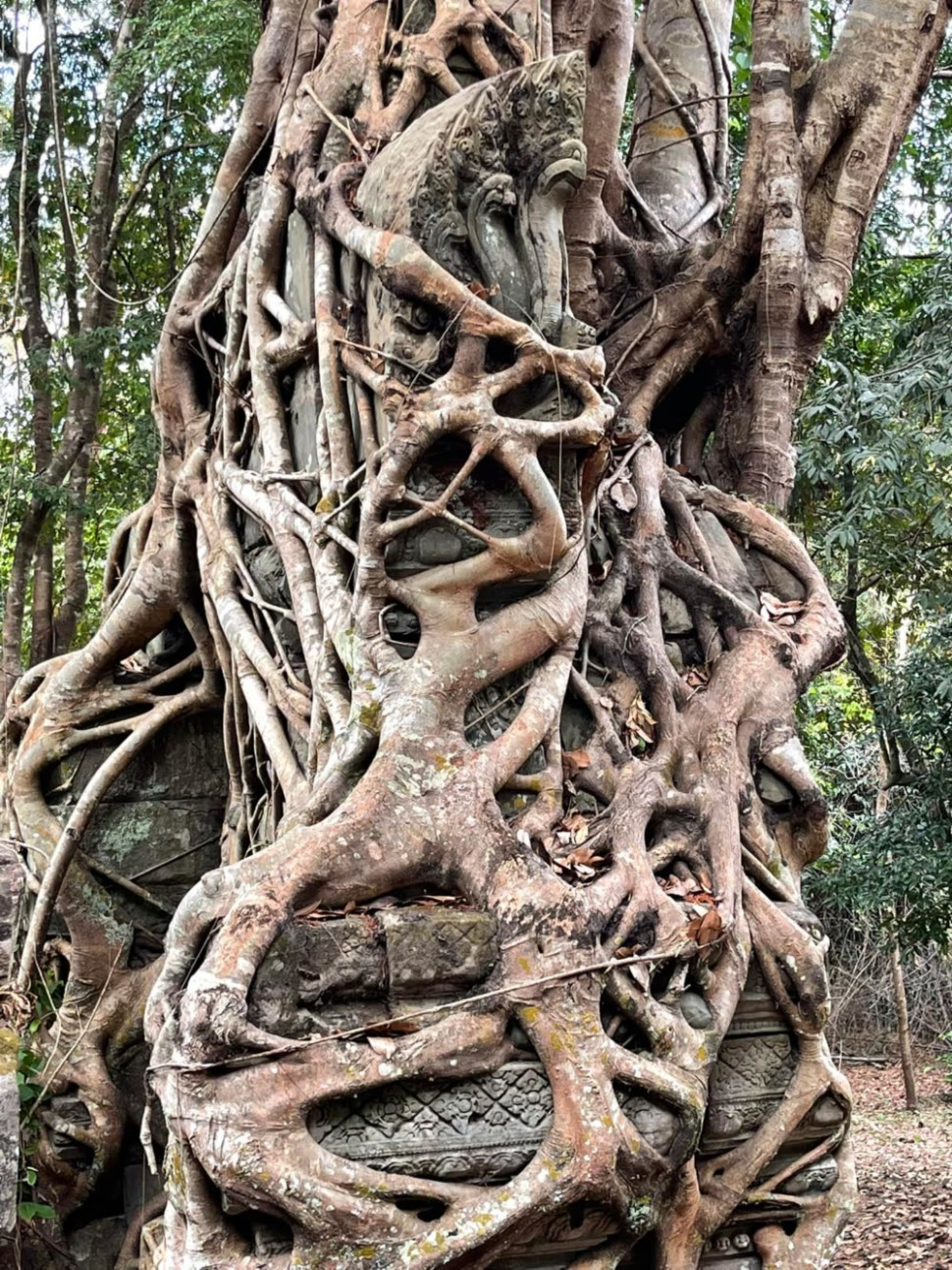 Trar Peang Khnar Sen Keo Temple © Sabay News
Trar Peang Khnar Sen Keo Temple © Sabay News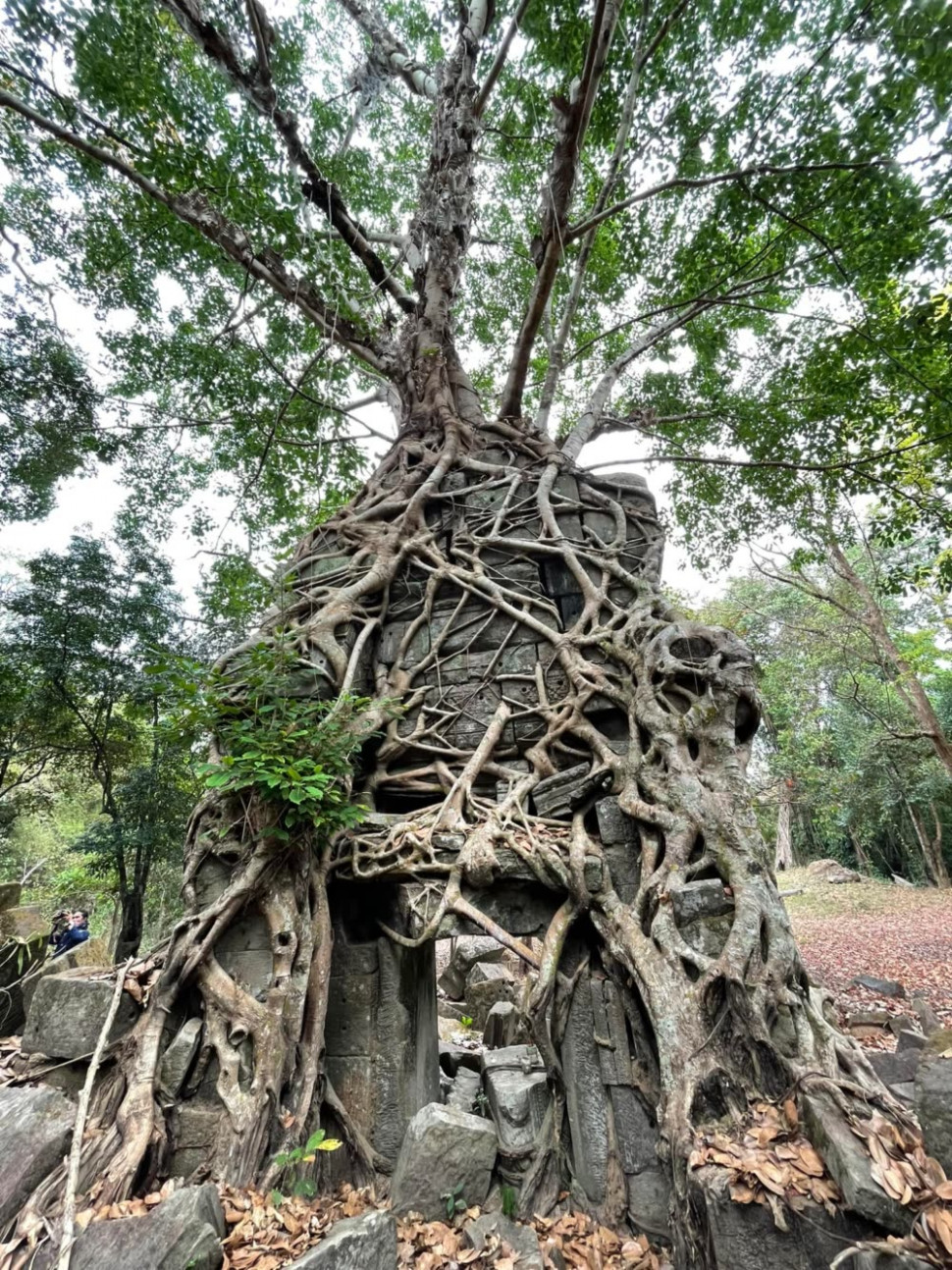 Trar Peang Khnar Sen Keo Temple © Sabay News
Trar Peang Khnar Sen Keo Temple © Sabay News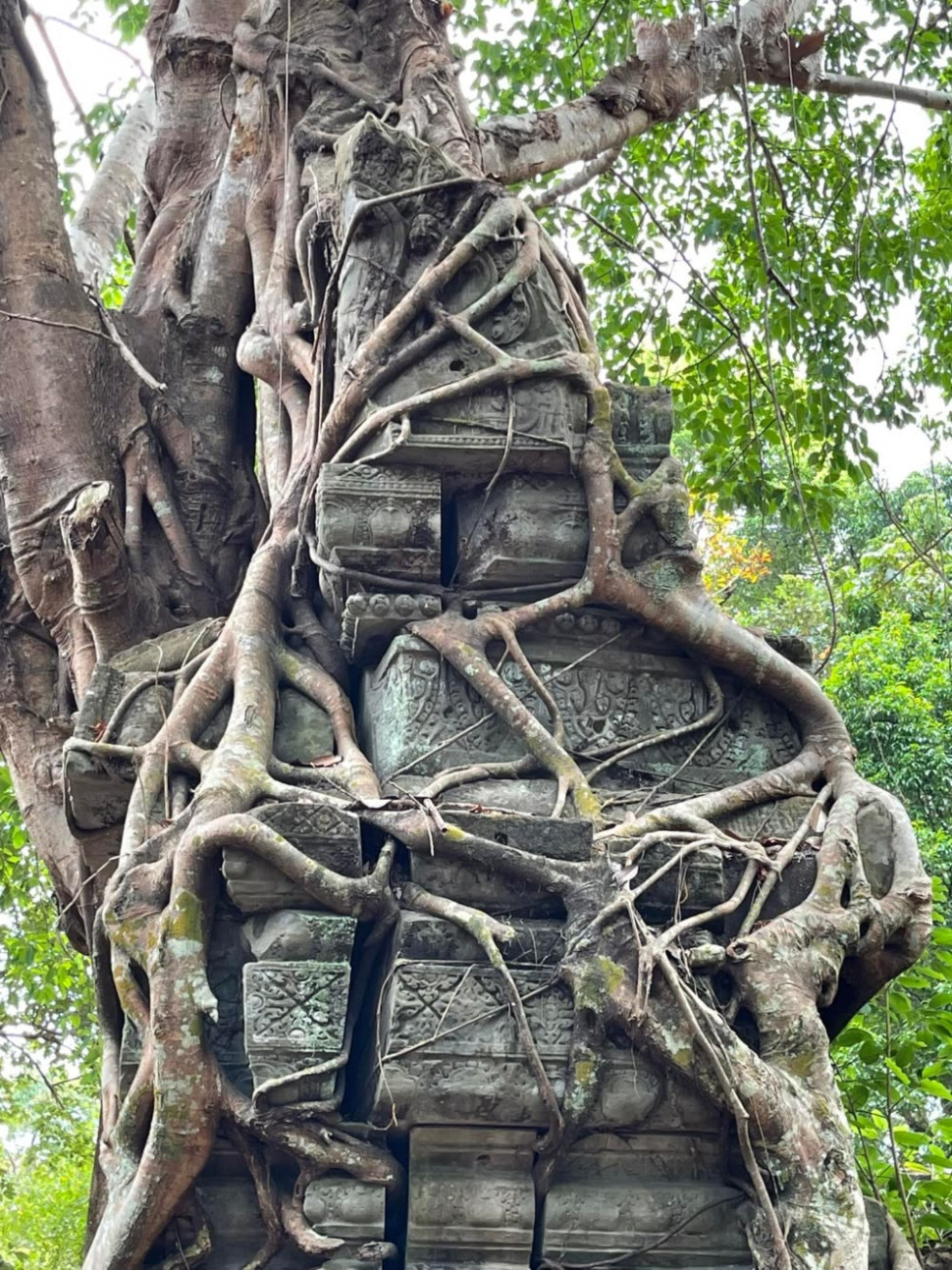 Trar Peang Khnar Sen Keo Temple © Sabay News
Trar Peang Khnar Sen Keo Temple © Sabay News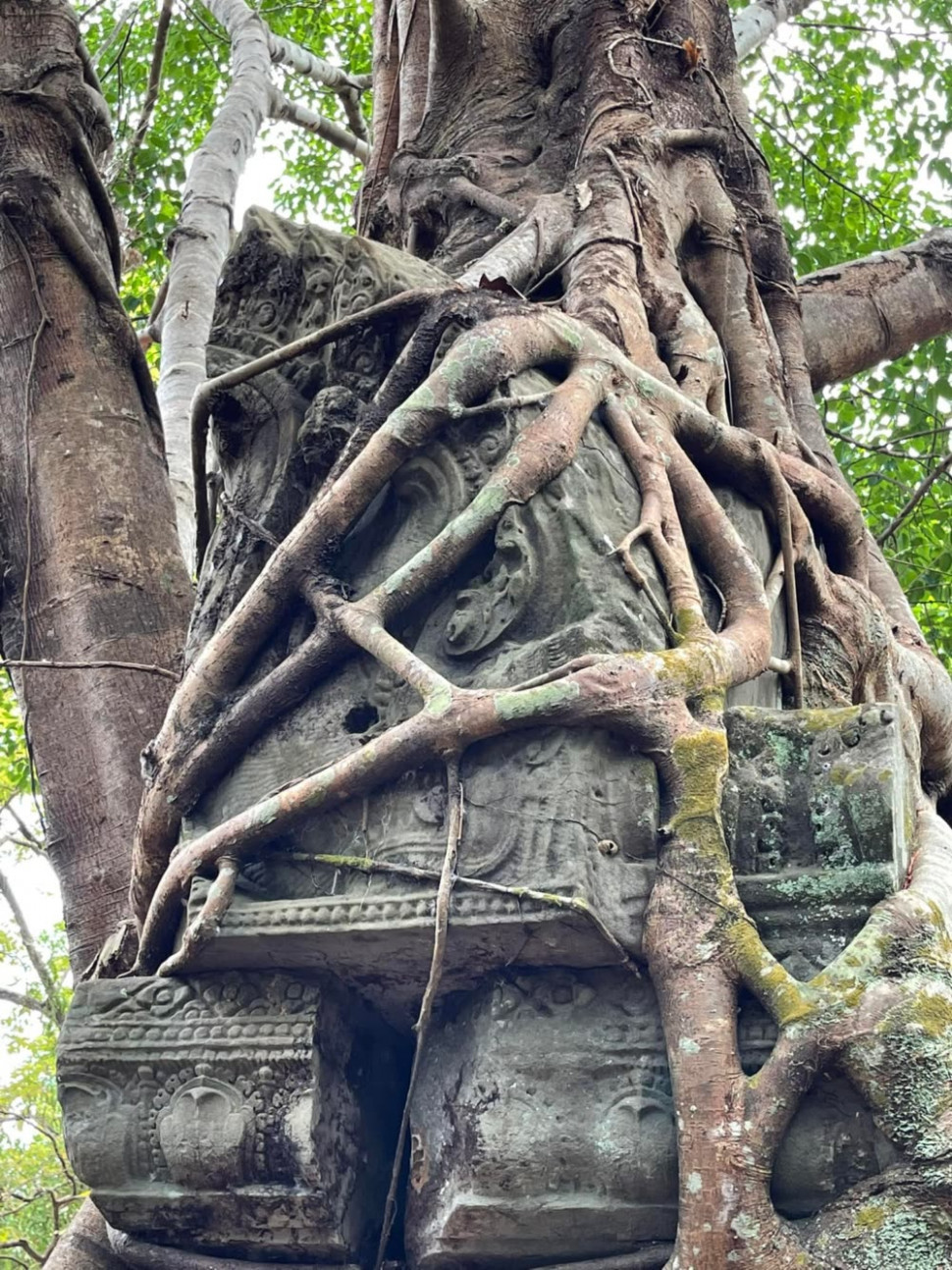 Trar Peang Khnar Sen Keo Temple © Sabay News
Trar Peang Khnar Sen Keo Temple © Sabay News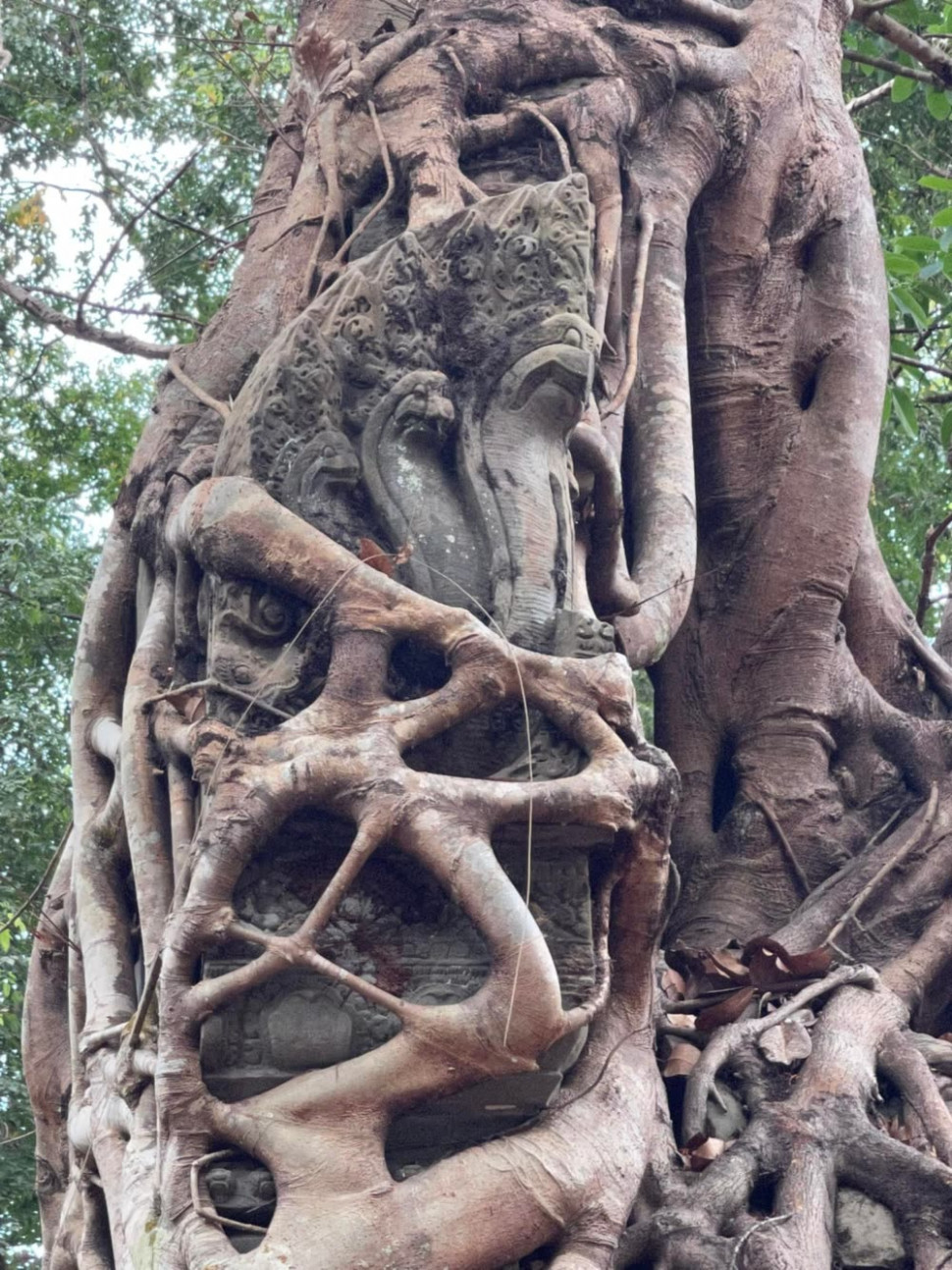 Trar Peang Khnar Sen Keo Temple © Sabay News
Trar Peang Khnar Sen Keo Temple © Sabay News

